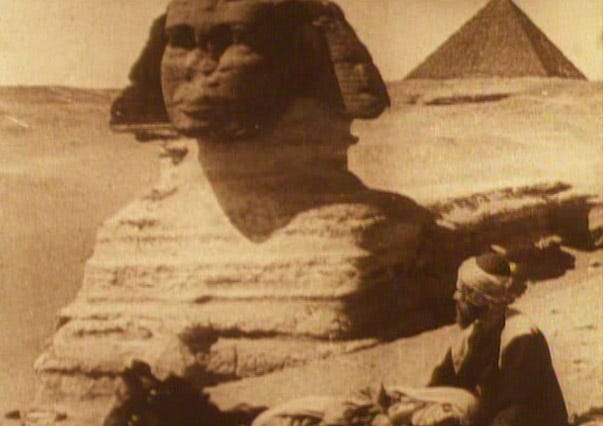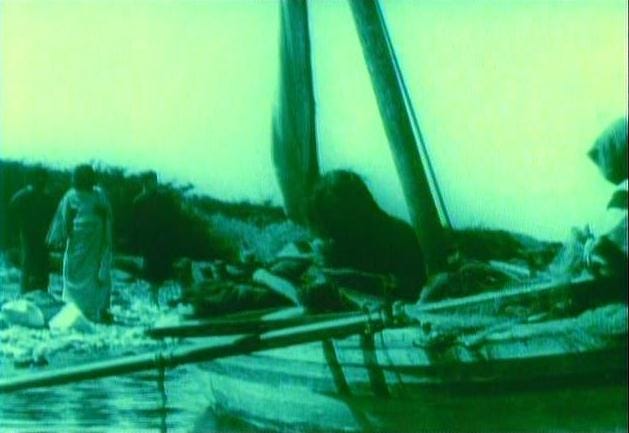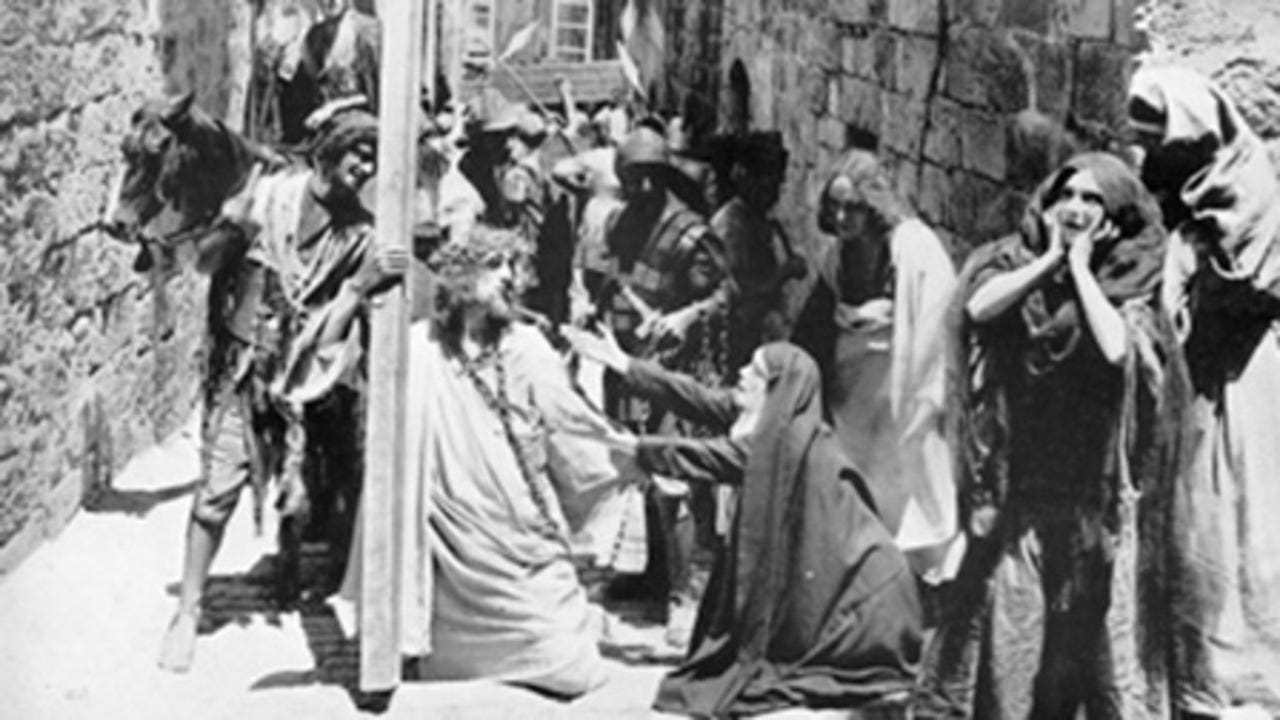At the beginning of 2004, during my first year in Divinity School, I took a New Testament course with Margaret Mitchell. It was a heady time to be studying the Gospels: the inscription on the James Ossuary had recently been announced to be a modern forgery, Dan Brown’s The Da Vinci Code was all the rage, and Mel Gibson’s The Passion of the Christ was due to release on Ash Wednesday. These three together had raised significant public interest in the “real” Jesus and how we might know about him. Prof. Mitchell was great about engaging these questions in class, training us in close reading, and encouraging us to think about what we understood by authenticity. She would ask things like “what evidence would you want - a photograph, security footage - and what would that tell you?” She noted that if we really wanted some sort of physical object to connect with Jesus, then go visit the Temple mount, whose stones Jesus walked on.
This idea of authenticity emerged for me again when watching Sidney Olcott’s From the Manger to the Cross. This 1912 movie, clocking in at about 70 minutes, had about 5000 feet of film across five reels, making it both one of the first feature length films overall and (I believe) the first film about Jesus to exceed an hour.1 Instead of the thirteen brief, one minute vignettes of La Passion, it has scenes that extend more than a few minutes, it has scenes that feature cutting back and forth between different actors (especially in the sequence of Jesus’ agony in the garden and Judas’ bringing the soldiers to arrest Jesus), and it has a few more camera angles than the consistent tableau shots of La Passion.
Its greater length means many more of the stories from the Gospels can be told, but it also further highlights those stories that get left out. I’ve noted before my fascination with the temptations of Jesus, but these are absent from the film. So too is Christ’s baptism, despite the film’s inclusion of John the Baptist announcing the coming of the Lord. Most obviously, as many other commentators have pointed out, the film sticks to the endpoint in its title and skips the resurrection. Instead, following a final shot of Jesus breathing his last, it closes with a title card featuring John 3:16, perhaps inspiring generations of sports evangelists. While cutting some stories makes sense, especially for a film already so much longer than other Jesus films, the loss of the resurrection is especially surprising.
From the Manger to the Cross broaches the question of the “authentic Jesus” in interesting ways. In a first for films about Jesus, it was shot on location in Egypt, in Jerusalem, in Galilee, and in the surrounding areas. The studio behind the film, Kalem, was groundbreaking in its use of travel for filming, whether those locations were elsewhere in the United States or elsewhere in the world. The impetus for going abroad to film was primarily to make travel films that would be of interest to audiences back home. For many viewers at the time, this film’s inclusion of the Pyramids of Giza or the Sphinx presented an opportunity to see moving pictures of a world they had only read about.2

Even at the time, however, there was a clear sense that shooting in places traditionally associated with events from the gospels would make this film a more authentic portrayal of the life of Christ. Thus Olcott and his crew shot in Bethany at what was believed to be the real tomb of Lazarus and traveled to the Sea of Galilee to film the calling of the disciples. According to JP McGowan, the actor who played Andrew in the film,
"Each and every scene in this film is being localized, the traditional and historic spots used whenever possible, and, as the authentic spot for the Calling of the Fishermen was the Lake of Galilee, we traveled 224 miles, by wagon and horse, to obtain a few small scenes and thereby established a record in Moving Picture circles."3

The idea of authenticity was spun out in another way in From the Manger to the Cross. Initially, the idea for depicting Jesus was that it would simply be a bright light rather than a human actor. According to Fritzi Kramer, this was the desire of Frank Marion, one of the heads at Kalem. It’s difficult to imagine this iconoclastic approach working effectively (although Kramer notes that the 1925 and 1959 versions of Ben Hur do this, even thought the 2016 does not), but Olcott did retain the bright light concept as a way of depicting divine encounters. This is most apparent at the beginning of the film, as bright light is played with to depict the annunciation to Mary, the dream of Joseph, and the angels’ appearance to the shepherds. Later, in at least two scenes of Christ acting miraculously - changing water to wine at Cana and the healing of the paralytic brought in through the roof - a bright light shines on his face as he does so.
Nonetheless, Jesus was depicted by a human, the first time actor Robert Henderson Bland.4 Bland’s performance was described by Leslie Wood as “so sedately remote as to be not so much an acting performance at all but a series of dignified poses." This approach, for good and for ill, was achieved through three interventions. First, the adult Jesus is consistently depicted in white garments only, making him stick out from the other characters who always had some mixture of colors, light and dark. The only character who comes close to that wardrobe is Pontius Pilate, but even his white garments are lined at the edges in such a way as to set him apart.
Second, Bland took the role on the condition that he would not be directed by anyone. Olcott could direct the other actors all he liked, but Bland would do his own thing. This led into the third aspect, which was Bland’s proto-method acting approach to the role. Bland was aloof from the crew and the other actors, which led to their viewing him as different, set apart. Wood reports that other actors would not smoke or speak loudly in front of him. Moreover, the crown of thorns was real enough to draw blood, and Bland nearly fainted from carrying a fifteen foot wooden cross up the Via Dolorosa.5

Bland’s approach to the performance, coupled with numerous depictions of miracles, suggest a Jesus that is a bit otherworldly, aware of who he is and his mission. In a scene depicting Jesus’ discussion of Abraham in John 8, Jesus walks in front of the group he’s talking to as he says “before Abraham was, I AM.” The moment he says this, the group picks up stones to throw at him (8:59), but they freeze, arms in the air, when he turns back to them. The scene draws a bit on the “I AM” in John 18, when his captors fall over at the word.6 In a departure from John, though, he does not run off to hide; he continues speaking to them, fearlessly turning his back on them as he does, before serenely walking away.
Jesus’ self-assuredness in the film is also balanced with those stories that indicate his human characteristics. Early on, Luke’s claim that Jesus was obedient to his parents and “advanced [in] wisdom and age and favor before God and man” (Luke 2:52) is shown by his sitting on Mary’s knee as she teaches him, his father at work behind them. When he learns of Lazarus’ death, he weeps openly. In one of the more intense scenes, Jesus angrily and passionately scourges the moneychangers in the Temple with his own belt.
The mind of Jesus is difficult to discern in the film; like other silent films, there is no dialogue, only title cards, and these only ever contain quotations from the King James Bible. Viewers are left to make sense of Jesus from Bland’s performance and those of his castmates, even as these performances vacillate between over-dramatic gesturing and slow plodding movement.

On the whole, From the Manger to the Cross is not a film I recommend as a casual watch, despite a few interesting choices. It is however an interesting historical curiosity precisely because of the conscious decision to take historical authenticity, represented here through geography, as a central interpretive approach for the life of Jesus. There is a degree to which I, as a viewer, felt a bit more in the story because of it. I have never been to the Holy Land myself, but I’ve had several friends tell me that being there deeply enriched their prayer lives and their reading of the Gospels. The film is trading on that same basic idea, albeit at a distance.
Of course, essential to the geographic authenticity working is that the audience is told about it. Apart from widely recognized landmarks like the Pyramids or the Sphinx, little else is obviously recognizable. It is possible that being on location helped the actors, the extras (who were all local residents or tourists who happened to be in town), and the crew with their performance (although I largely think these are still generally bad). But really the choice to film in “authentic” locations seems ultimately to be more of a marketing strategy than anything else.
Here there’s a parallel that can be drawn between From the Manger to the Cross and Mel Gibson’s The Passion of the Christ. The latter film famously decided to make the spoken languages of the film Aramaic and Latin as an effort at linguistic authenticity.7 For the audience, this is intended to place them more fully in the scene during the final hours of Christ’s earthly life. And, depending on the viewer, perhaps it does, perhaps it doesn’t (Gibson’s Jesus speaks Aramaic, but I still needed the subtitles). But the languages, along with other aspects of the production, were also important in the marketing of the film. This arguably reached its zenith when Pope John Paul II was reported to have said of the film “It is as it was,” comments which the Vatican later said were not intended to be a “public judgment” or official statement on the film.
The interpretive choice to go for historical accuracy in specific ways is interesting and valuable. Depicting Jesus in the right location, or languages, or clothing, or ethnicity can ground the film. It can help the viewer feel more connected through the historical and cultural difference. It might aid with the idea of “composition of place” as part of spiritual contemplation.
But we also have to remember that it is an interpretive choice: it is not required for a Jesus film to be good as a movie, spiritually moving for the audience, or theologically astute. It’s a choice that might, or might not, work. From the Manger to the Cross’s on-location filming was groundbreaking at the time, but I didn’t think it made that big of a difference in the film in its spiritual or theological dimensions. Obviously the sets are much better than what was available in La Passion, but then again even Jesus Christ Superstar filmed in Israel and we hardly think about “historical accuracy” with that movie.
As an approach to scriptural interpretation, I think the effort to be authentic to the places, languages, etc is comparable to a “historical-critical” approach to scripture, which is significantly important in the study of the Bible (it’s something I teach to undergrad and grad students). But it’s also a problem in the life of the Church if historical-critical methods of reading scripture crowd out other allegorical, moral, liturgical approaches to interpreting scripture, which are not separate from the historical and literal senses but are also not reducible to them either. The Church benefits from the range of interpretive methods, and I think we also benefit from the range of approaches to the cinematic Jesus.
I’ll be curious to see what other creative interpretive choices are made as I shift towards the big epic Jesus films.
Next week in the Celluloid Christ series: King of Kings (1927), directed by Cecil B. DeMille. You can find links to all the posts as they come out in the series page.
The French film Vie et Passion du Christ, in its 1905 form, is the previous record holder for length at 44 minutes.
Even for viewers today, it’s an interesting opportunity to see the Pyramids or the Via Dolorosa as they were in the early 20th century.
https://catalog.afi.com/Catalog/moviedetails/13552
The baby Jesus was portrayed by the child of Australian tourists, while Percy Dyer portrayed Jesus as a youth.
https://archive.org/details/miracleofmovies00lesl/page/166/mode/2up?view=theater
Jesus’ captors falling over at the “I AM” is also depicted in the arrest scene around 58:45 in the film.
Although it is worth noting that it would likely have been more accurate to use Greek in the film rather than Latin.



